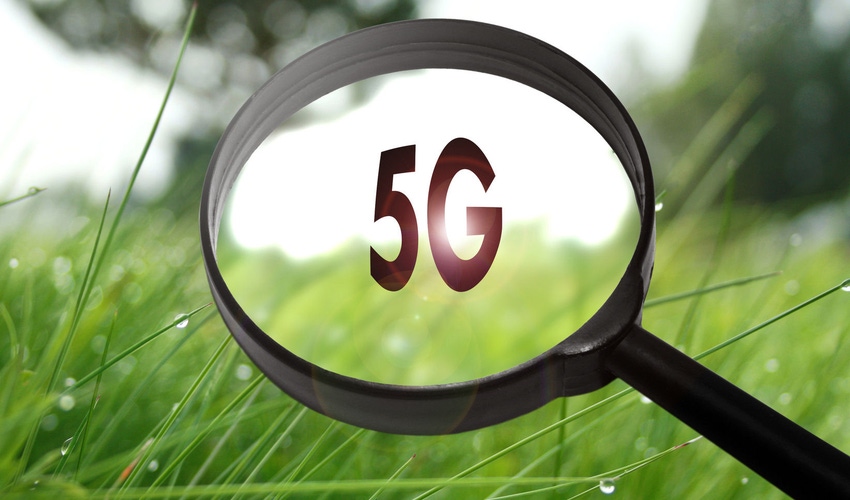Q&A with Bernard Bureau, 5G and Wireless CTO at TELUS
Use-cases driving 5G adoption will occur in stages as the technology matures over time. Initially, 5G technology will be applied by the operators for a few use cases.
March 27, 2018

What use cases do you think will drive adoption of 5G?
Use-cases driving 5G adoption will occur in stages as the technology matures over time. Initially, 5G technology will be applied by the operators for a few use cases:
Enhanced Mobile Broadband (eMBB). The newest flagship smartphones will quickly support this use case and the end to end adoption will be driven mainly by two things:
By the requirement for operators to lower unit cost for data. 5G technology can do this with technologies such as massive and multi-user MIMO and the appropriate 5G spectrum such as 3.5 GHz and mmWave, as long as the regulators allocate wide enough channels (100 MHz for 3.5 GHz and 400 MHz for mmWave for example).
By the fierce competitive pressure among operators in many markets like Canada. Even advanced LTE-A Pro networks won’t be able to compete on equal grounds with 5G networks so as soon as one MNO launches 5G, other quality MNOs will be compelled to rapidly do so as well.
Wireless To The X (WTTx). The size of this opportunity is still being assessed in many countries. In Canada, fiber rollout to households and businesses is already progressing very rapidly and millimeter wave spectrum has not been auctioned yet. Due to fiber and spectrum timing, WTTx will probably not be massively deployed in Canada but it will still have its use where fiber is either unfeasible or too expensive.
Machine type communication (MTC). Although not using the 5G new radio technology, low-power wide-area LTE-based technologies are going to achieve the 5G goal of being able to support 1 million devices per square kilometer. These use cases are already in full development across the globe, addressing real problems for a number of verticals.
5G however will be able to deliver much more than this. As the technology matures to support URLLC (Ultra Reliable Low Latency Communications), coupled with Dynamic Network Slicing functionality, a vast array of new and potentially disruptive use-cases will become possible, opening up vertical and horizontal opportunities across a wide array of industries and sectors such as C-V2X applications, autonomous drones, etc.
Dynamic Network Slicing promises to enable at a very low cost real-time service configuration with the ability to deliver specific SLAs for specific group of applications, type of clients, etc.
How do you think 5G networks will be monetized?
We think there are a few angles:
The benefits of using AI deep-learning to analyze 5G big data and optimize cost for businesses and simplify consumers’ lives will drive everyone to connect everything that surrounds us.
As briefly mentioned, 5G will be able to provide a better unit cost than 4G for delivering data for the eMBB use case.
The new use cases inherent to the 5G technology (eMBB, mMTC, URLLC, Network as a Service etc) will open up a large and new set of business opportunities, some of them disruptive.
We plan to observe the industry and market developments in order to take advantage of emerging business opportunities as they arise, and help to actively develop others such as in the health sector.
In order to respond quickly to rapidly evolving business demands and expectations, it is imperative that we build a 5G network which supports all the key enablers. This will allow us to adapt and support a myriad of use-cases as they emerge, thus monetizing our 5G assets in an efficient manner.
What are your industry predictions for 2018?
We expect to see the 5G use cases to continue evolving very rapidly.
2018 is the year when 5G will start to materialise as a real available technology.
A number of countries have already started doing commercial trials for iconic events such as the Olympics, and this type of activity will continue to pick up pace during 2018.
We will see 5G commercial launches but not yet for smartphones. These early launches will be focused on WTTx use cases and Customer-Premise Equipment (CPEs).
What is your key message at 5G North America this year?
Access to internationally harmonised mid-band spectrum such as 3.5 GHz band is critical for deployments of 5G networks. More work is needed in North America on that front.
Companies and countries that get a head start on 5G stand to benefit significantly as technology leaders and use-case developers, while the rest will have to catch up to the lost opportunities and market share.
Bernard Bureau is a keynote speaker at 5G North America 2018, May 14-16, taking place in Austin, Texas. He will be discussing Telus’ 5G plans and enhancing network capabilities by achieving Gigabit LTE Speeds as well as taking part in a panel discussion on challenges in the harmonization of spectrum.
Read more about:
DiscussionAbout the Author(s)
You May Also Like








.png?width=300&auto=webp&quality=80&disable=upscale)


_1.jpg?width=300&auto=webp&quality=80&disable=upscale)


.png?width=800&auto=webp&quality=80&disable=upscale)